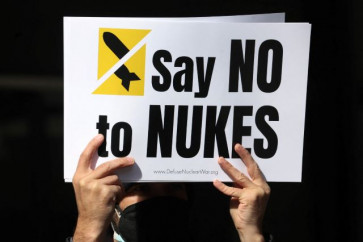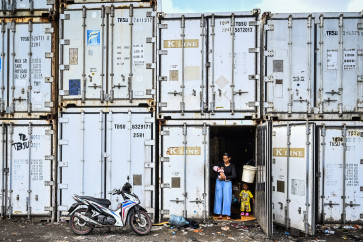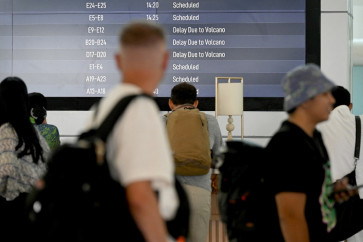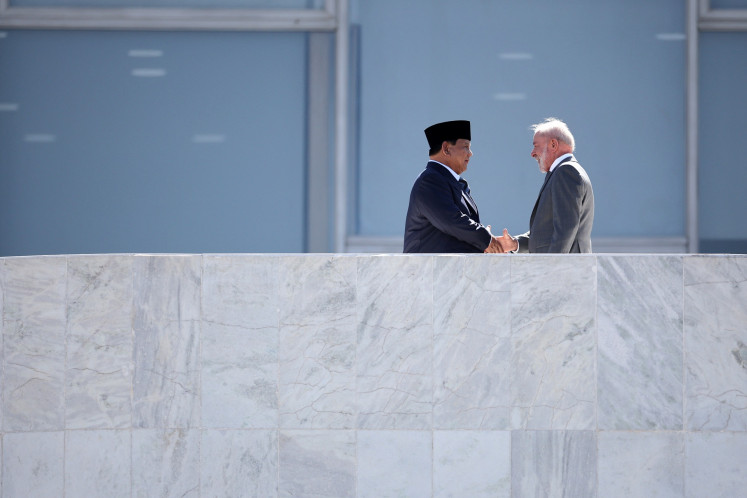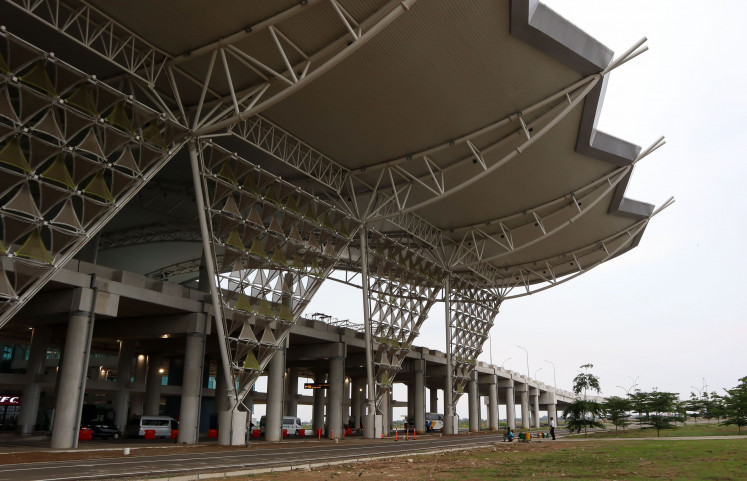Popular Reads
Top Results
Can't find what you're looking for?
View all search resultsPopular Reads
Top Results
Can't find what you're looking for?
View all search resultsBogor to turn slaughter- house into art gallery
The Bogor administration is planning to rehabilitate the countryâs oldest slaughterhouse, located on Jl
Change text size
Gift Premium Articles
to Anyone
T
he Bogor administration is planning to rehabilitate the country's oldest slaughterhouse, located on Jl. Pemuda in Bogor, West Java, by converting it into an art gallery.
The slaughterhouse was built in 1929 by the Dutch East Indies colonial government and was then named Jawatan Kehewanan. It functioned as an abattoir for almost 80 years. The 1.3-hectare structure is surrounded by a four-hectare vacant lot.
In 2008, all slaughterhouse activities were moved to a new and larger building in Bubulak that had more comprehensive facilities. Since then, the slaughterhouse had stood abandoned, but it was still recognized as a heritage building.
According to Bogor deputy mayor Deddy Mizwar, the city administration will use part of the slaughterhouse as an art gallery.
'Bogor has many artists and creative residents. We also hold the country's largest Cap Go Meh festival, which is a very popular tourist attraction. We need art buildings to foster these artists and festivals,' Deddy told reporters during a recent visit to the slaughterhouse.
Every February, dozens of cities in the country hold Cap Go Meh festivals to celebrate the Chinese New Year. The festival includes, among other features, the popular dragon dance performed by professional acrobats. The largest festival in Indonesia is held in Bogor.
'Moreover, Bogor also has heritage sites from the Tarumanegara Kingdom. Combined with a nurtured arts culture, we can turn Bogor into a unique tourist destination,' Deddy said.
Deddy acknowledged that art is a creative industry that the government must support because it has much potential. Therefore, he said, the city administration was committed to helping foster the city's creative minds by building the art gallery.
Meanwhile, Bogor mayor Bima Arya said that the art gallery would not only function as a gallery, but also as a theater and as a place where creative youth could gather and discuss various things.
'We don't want creative youths to go to Jakarta or Bandung in order to speak their minds. We will facilitate them here in Bogor. Bogor will also be a creative city,' Bima said during the same event.
He added that the administration would also build a Bogor Legislative Council building near the art gallery so that 'politicians could be more creative and cultured'.
Separately, Bogor's Indonesian Puppetry Association head Sahlan Rasidi praised the city administration for its initiative because, he said, it was only fitting that the heritage building be transformed into an art gallery.
'We support this initiative. Bogor needs an arts space. However, we hope that the Bogor administration does not demolish the original slaughterhouse. The slaughterhouse is wide and in it the administration can make a museum, a theater, a gallery or an arts plaza,' he said.


